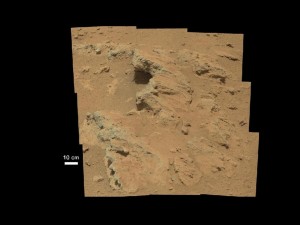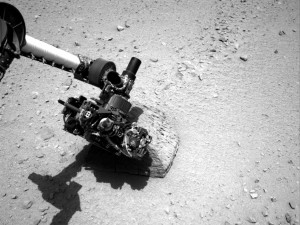Curosity has been examining scoop fulls of Martian soil by x-ray diffratcion and its analysis is similar to the soil in parts of Hawaii. For the scientists involved in the project this was not an unexpected result. From Scientific American:
“This Martian soil that we’ve analyzed onMars just this past week appears mineralogically similar to some weathered basaltic materials that we see on Earth,” David Bish, a CheMin co-investigator with Indiana University, told reporters. He cited as an example the “weathered soils on the flanks of Mauna Kea in Hawaii.”
…
CheMin’s first results—obtained using soil Curiosity scooped at a site called “Rocknest”—aren’t terribly surprising, researchers said.
“Much of Mars is covered with dust, and we had an incomplete understanding of its mineralogy,” Bish said in a statement. “We now know it is mineralogically similar to basaltic material, with significant amounts of feldspar, pyroxene and olivine, which was not unexpected. Roughly half the soil is non-crystalline material, such as volcanic glass or products from weathering of the glass.”



